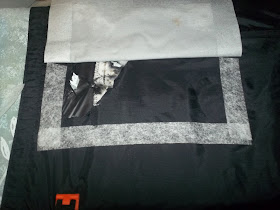So the fuel pump on my 1500 Vulcan crapped going down the highway. I managed to bypass it on the side of the road and I got to where I needed to go. But why does a carburetored bike need a pump? Especially considering it worked without one until the fuel in the tank got lower than the highest spot in the fuel line. A fuel pump also costs about $300.
So here's the stock fuel line routing. The fuel goes forward from the petcock instead of going directly to the carb. (This because the stock air box is in the way of a direct gravity feed to the carb.)
The fuel line goes forward and up, then to the filter. Basically as shown here.

Through the filter and to the pump, then finally the carb.

If the petcock was right facing instead of left then going to straight to carb would be simple.

So I had this great idea to buy a 500 Vulcan petcock that is right facing and vacuum operated, too.

Well, the 500 petcock will bolt on to the take, but the vacuum port won't clear the rocker box. I should have bought a 800 Vulcan petcock. It the output for the 800 points down and the vacuum port does not stick out behind.

So I'm back to my first plan. Modify my stock petcock to right facing. Some drilling, tapping, and a plug should get the job done.

Tear it down and remove the output fitting, too.

Drill the blind end out to same diameter as the stock output size.

A hole all the way though.

Drill the stock output side only to the tap size for a 1/8 pipe plug.

Tap it.

Pipe seal the plug threads and install it.

I figure a little sealant on the brass output nipple wouldn't hurt either.

Press the nipple in.

Finished modified petcock.



Here's the bypass that got me home.

This is the hose from the filter to the pump. Notice that like the 800 the 1500's petcock output is larger than the carb inlet. I will use this hose and the stock filter, so I won't have to buy universal filter with two different fittings.

The bend in the hose is about right.

Stock filter and new straight line to the petcock.





















































































